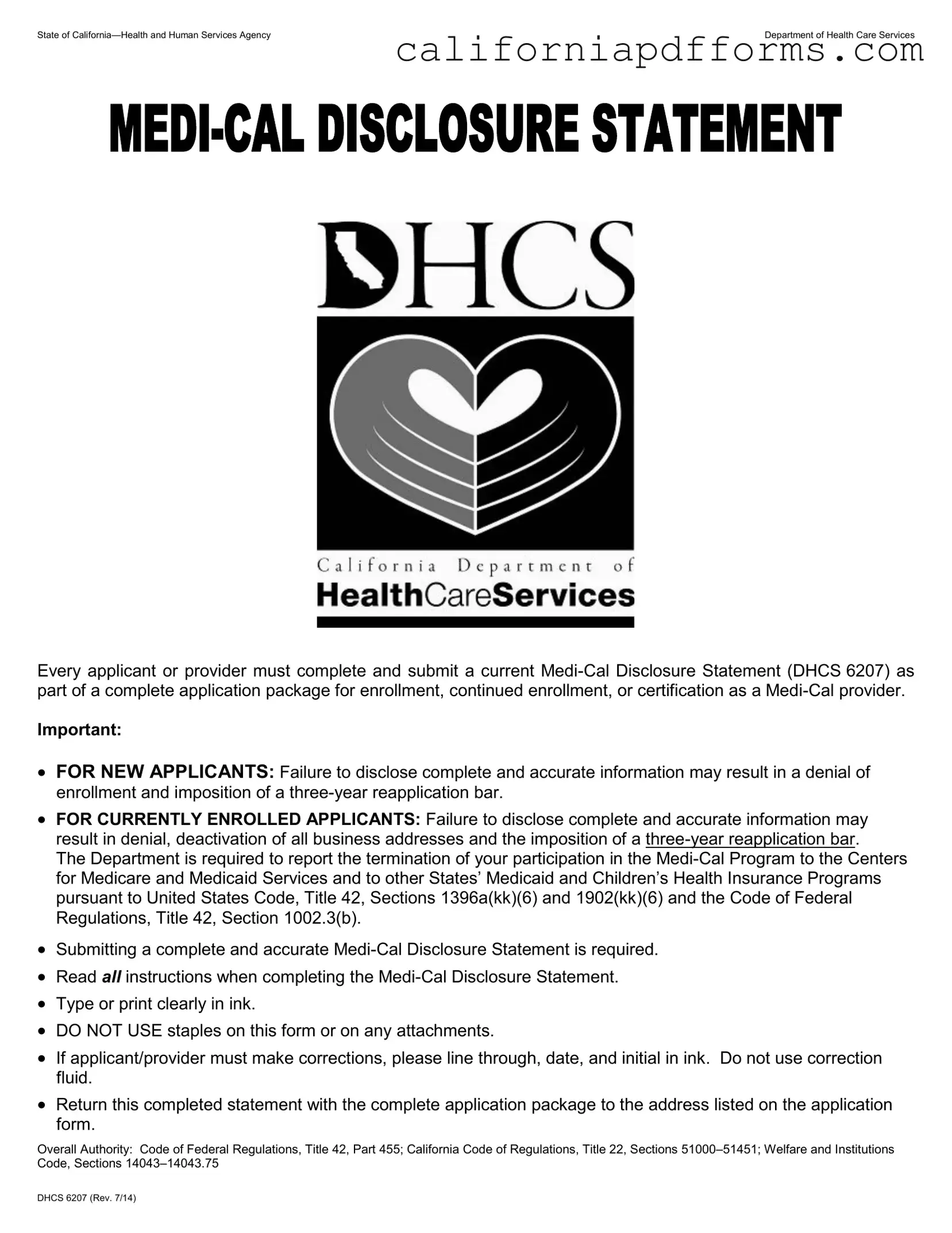The California DHCS form, specifically the Medi-Cal Disclosure Statement (DHCS 6207), is a required document for applicants and providers seeking enrollment, continued enrollment, or certification as Medi-Cal providers. This form collects essential information about the applicant or provider's business structure, ownership interests, and other relevant details necessary for compliance with Medi-Cal regulations.
All applicants and providers must complete the DHCS 6207 form unless they qualify for specific exemptions, such as using the “Medi-Cal Rendering Provider Application/Disclosure Statement/Agreement” or the “Medi-Cal Ordering/Referring/Prescribing Provider Application/Agreement.” If you are applying as a new provider or are currently enrolled, you must fill out this form to ensure compliance with Medi-Cal requirements.
Providing incomplete or inaccurate information can have serious consequences. For new applicants, it may lead to denial of enrollment and a three-year bar on reapplication. Current providers face similar repercussions, including potential denial and deactivation of their business addresses, along with the same three-year reapplication bar. It’s crucial to ensure all information is accurate and complete.
Once you have completed the DHCS 6207 form, return it along with your complete application package to the address specified on the application form. Make sure not to staple the form or any attachments, and follow all instructions carefully to avoid delays in processing.
Yes, there are several important instructions to follow:
-
Type or print clearly in ink.
-
Do not leave any questions or boxes blank; indicate "N/A" if a question does not apply to you.
-
If corrections are needed, line through the incorrect entry, date, and initial the correction in ink.
-
Do not use correction fluid or highlighters.
Ownership interest is a critical aspect of the DHCS form. It refers to the possession of equity in the applicant or provider's capital, stock, or profits. The form requires detailed reporting of ownership interests, including both direct and indirect interests. This transparency helps ensure that all stakeholders are properly vetted and comply with Medi-Cal regulations.
Yes, the DHCS form must be notarized unless you are a specific type of licensed provider, such as a physician or pharmacist. For most other applicants, including Durable Medical Equipment providers, notarization is required to validate the information provided in the form.
For additional information, you can visit the Medi-Cal website at
www.medi-cal.ca.gov
. There, you can find resources related to provider enrollment and access more detailed guidance on completing the DHCS form.
